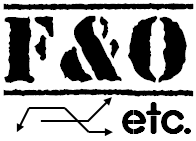|
|
In the Money Call Put Options and how the Moneyness of ITM options varies
What is In the Money Option or ITM Option? The moneyness of an option is determined by the "relative" values of strike price (Exercise price) and the underlying's spot price.By definition, If the exercise price of a call option is less than the present market (or spot) price of the underlying stock (or index), then the call option is said to be in-the-money option. The reason for this is that the buyer of this call option has the right to buy the stock at a price which at present is smaller than the price he would have to pay to buy the stock in the stock market.
So few things to note here with regard to "Moneyness of the Options":
1) The Moneyness of Options depends on the relative difference between the actual strike price (also known as exercise price) and the present market spopt price of the underlying security on which the option is defined
2) Moneyness is always looked at from the point of view of the Buyer of the option contract.
3) Moneyness, atleast definition-wise, does not have any relation to the expiry date of the option. However, as explained in the article Time Decay in Options, it has severe impact on moneyness as it determines the price of the option.
4) Moneyness has nothing to with the option premium, i.e. the amount paid to buy the option contract
So let's take an example of IBM stock option. Suppose Mr. X has bought the IBM call option at $2 and the IBM call option has a strike price of 60 and expiry as 30-May-2010. Suppose that the underlying spot price , i.e., the actual stock price of IBM is currently at $65 per share.
Now as mentioned in points 3 and 4 above, the price or premium paid for buying the option and the expiry date of the option has nothing to do to determine the "moneyness" of this option. So we will ignore the expiry date and option premium.
As per the definition mentioned above, In this case, the strike/exercise price of the option is $60 which is less than the present market price of the underlying ($65). Hence this particular option is said to be In the Money.
In this case the buyer has the right to buy the options at $60 per share (which is the strike price of the option), although the market price of IBM stock is higher ($65). Hence, this situation is profitable to the Buyer, so it is called In the Money Call Option.

Another way to look at the moneyness is the profitability in the pay off function for this position. As can be seen in the following payoff chart, the call option is profitable to the buyer. Hence it is in the money.
Same thing goes for the buyer of the Put Option, but on the reverse side. Say Mr. X had bought a Put Option on IBM stock which has the strike price of $70, which gives him the right to sell the IBM stock at $70. As the current market price of the actual IBM stock is at $65, Mr. X, as a buyer, is in benefit, because he has the right to sell the IBM stock at a higher price of $70, rather than the current spot price of $65. Hence, here again, the buyer of Put option is in profit, so it is called In the Money Put Option

Another way to gauge the moneyness of a Put option is to see whether the current postion is profitable for the buyer or not. As displayed in the payoff graph for the put option, the underlying price is lower than the strike price, so the put option is showing prift to the buyer. Hence it is in the money.
Please note that moneyness of options keep changing as the time passes by, and as the spot price of underlying keeps changing. Although the stike price of option usually remains contant during the lifetime (unless there is some corporate action), but something which is in the money today, may be out of money tomorrow. See the related articles for other Moneyness - Out of the Money and At the Money

0 Comments: Post your Comments
Wish you all profitable derivatives trading and investing activities with safety! = = Post a Comment